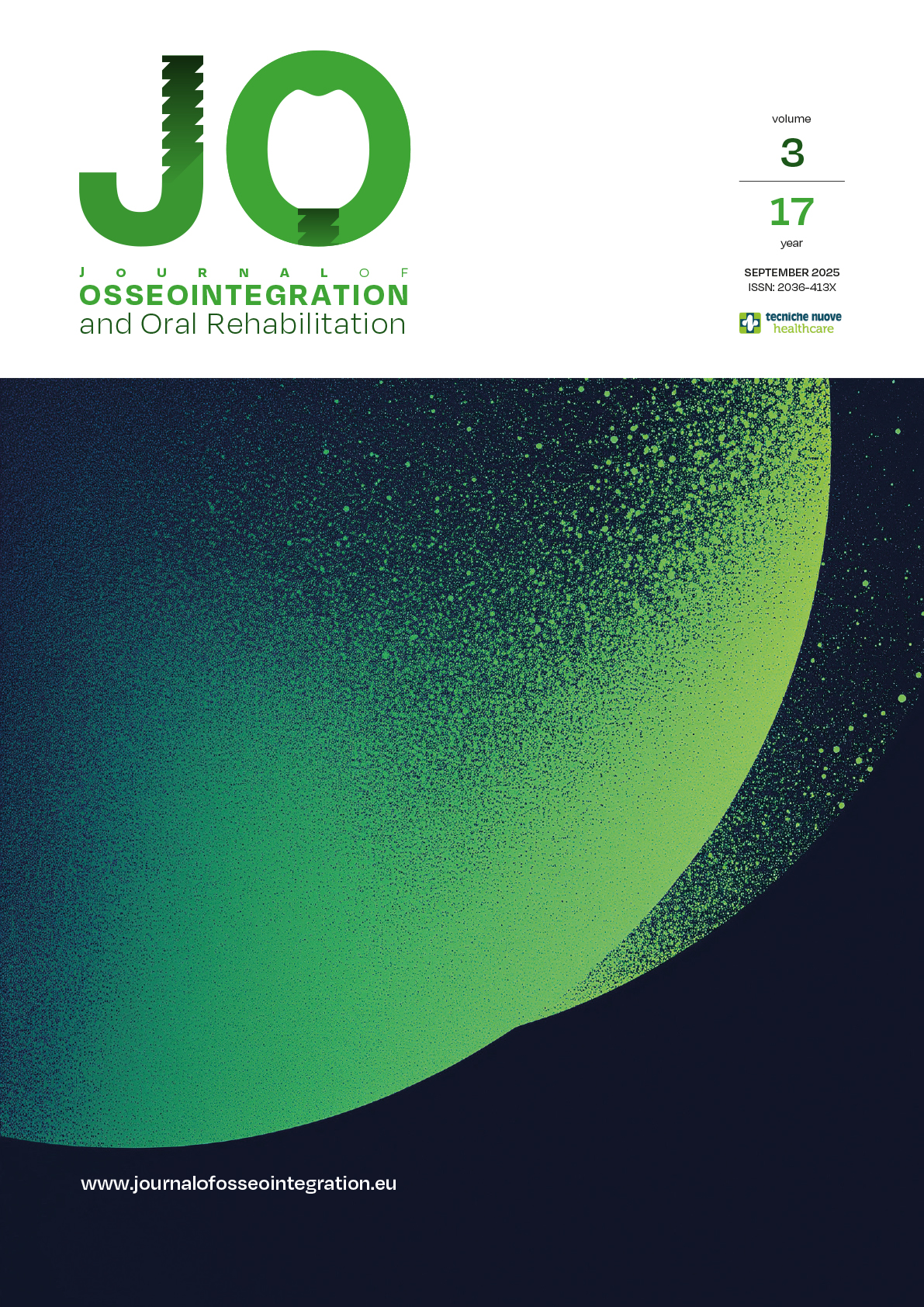Articles
Vol. 17 No. 3 (2025)
Evaluation of Color Stability and Micro-Hardness of New Composite Materials after Exposure to Different Beverages
Publisher's note
All claims expressed in this article are solely those of the authors and do not necessarily represent those of their affiliated organizations, or those of the publisher, the editors and the reviewers. Any product that may be evaluated in this article or claim that may be made by its manufacturer is not guaranteed or endorsed by the publisher.
All claims expressed in this article are solely those of the authors and do not necessarily represent those of their affiliated organizations, or those of the publisher, the editors and the reviewers. Any product that may be evaluated in this article or claim that may be made by its manufacturer is not guaranteed or endorsed by the publisher.
Received: 5 December 2024
Accepted: 8 September 2025
Accepted: 8 September 2025
113
Views
72
Downloads












